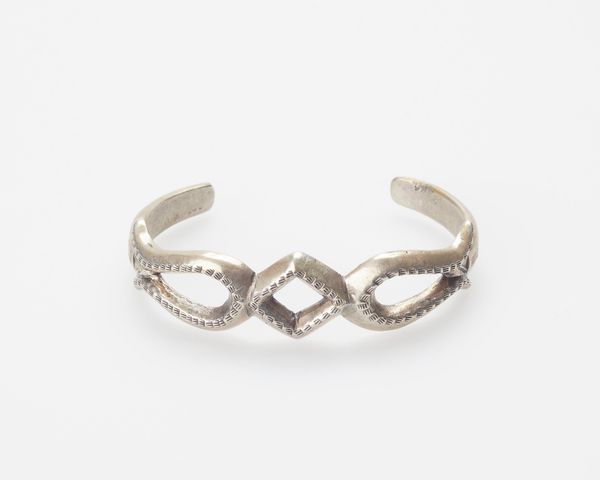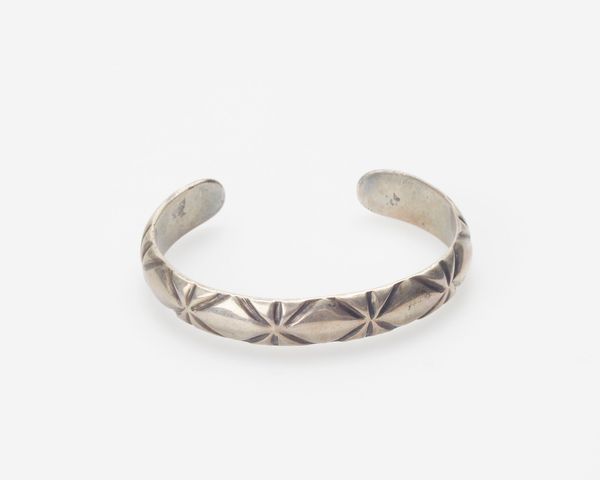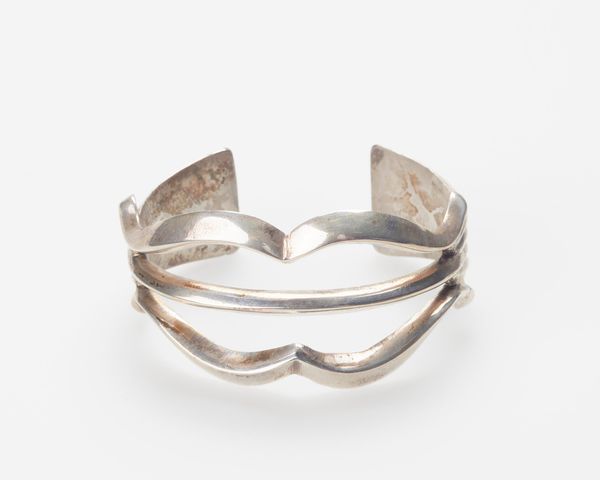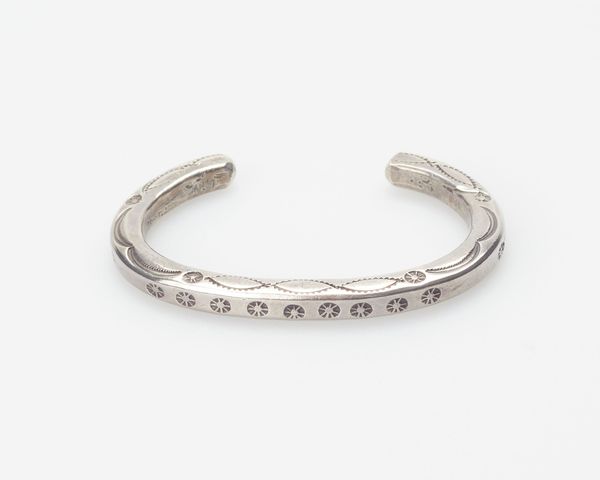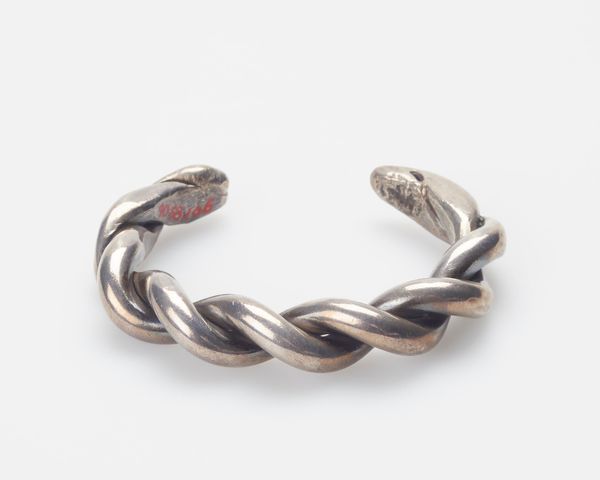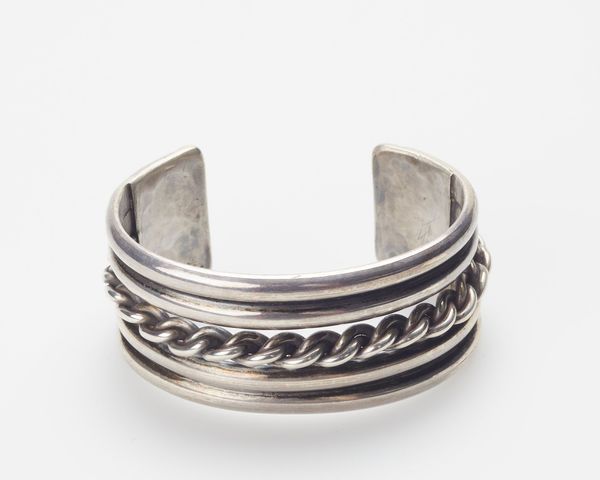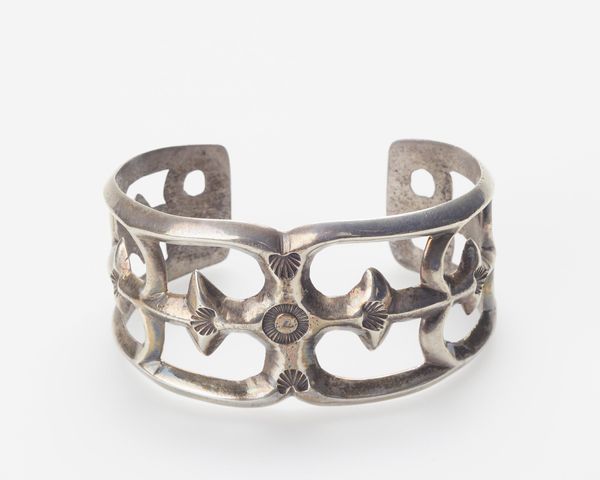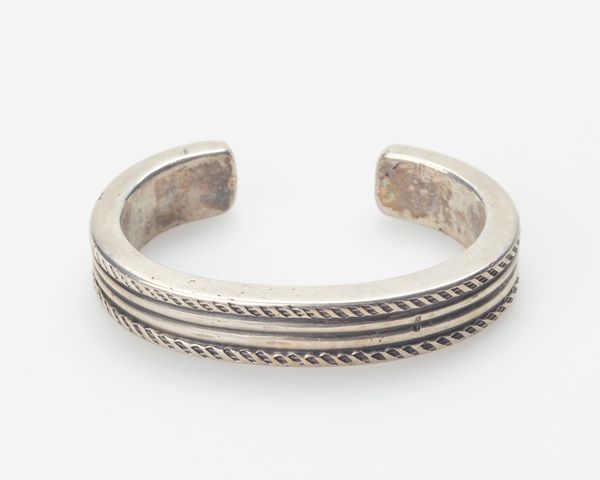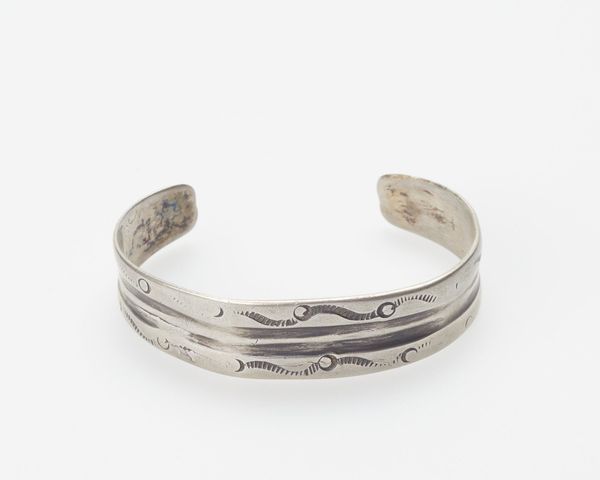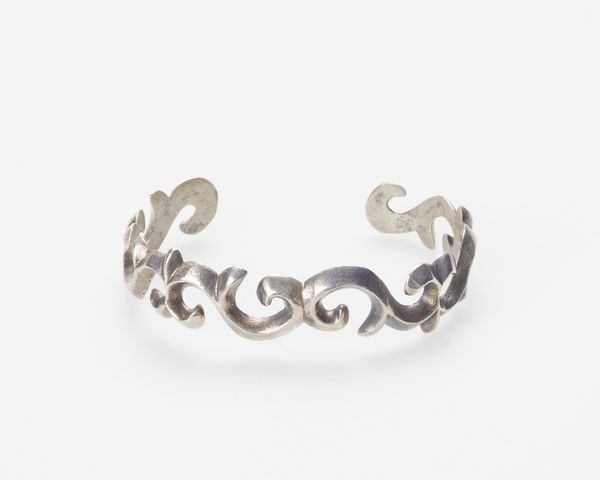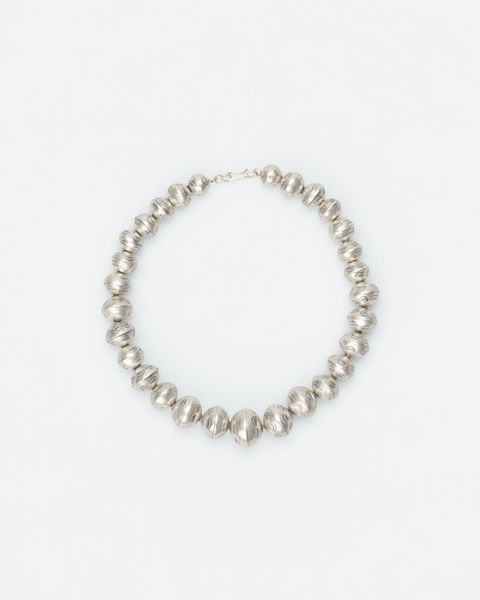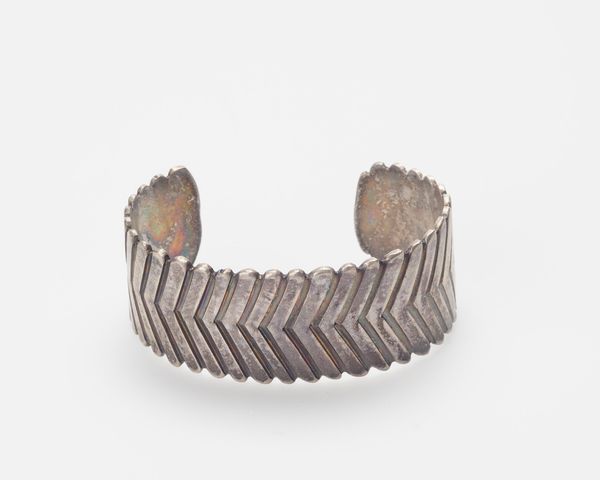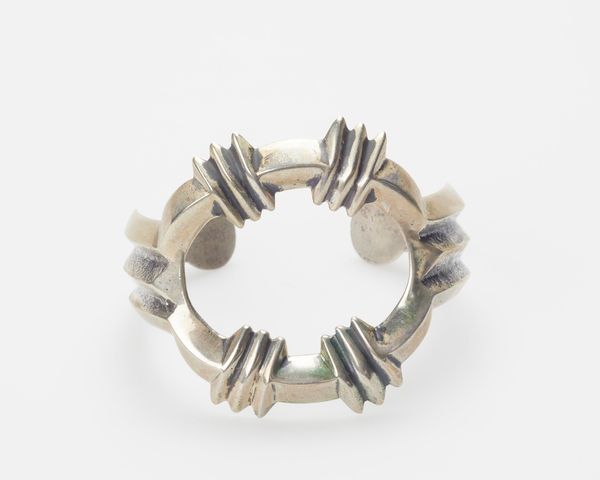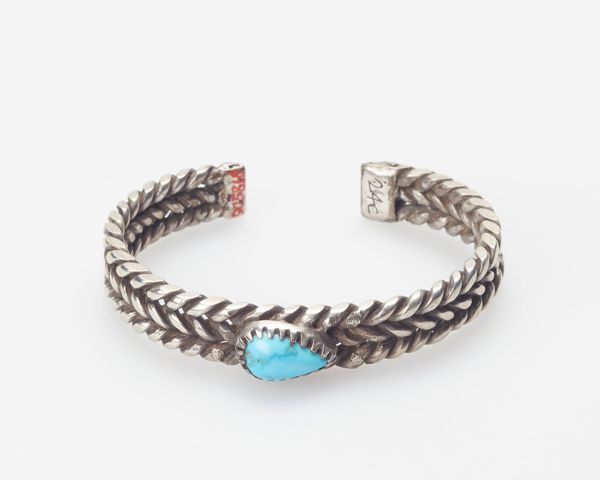
silver, metal
#
silver
#
metal
#
indigenous-americas
Dimensions: 2 5/8 x 11/16 x 11/16 in. (6.67 x 1.75 x 1.75 cm)
Copyright: Public Domain
Editor: This is a silver bracelet, circa 1930s, by a Navajo artist. The intertwined bands create a really beautiful, almost fluid feel despite the metal. What historical context should we consider when viewing this piece? Curator: Given the bracelet’s creation in the 1930s, we should reflect on the socio-political context affecting Navajo artists during this period. The Indian Arts and Crafts Board, established in 1935, aimed to promote Native American art, but how did its standardization and market-driven approach affect the autonomy and evolution of Navajo artistic expression? Editor: That's a fascinating point! Did this intervention change traditional techniques, materials, or the symbolic meanings embedded in Navajo jewelry? Curator: Indeed. The increasing demand for Native American jewelry, fueled by tourism and federal policies, could lead to both economic opportunities and cultural compromises. Mass production techniques or the adoption of certain "popular" motifs, maybe? Do you see anything specific in this bracelet that might point to that shift? Editor: The simplicity of the design, perhaps. It’s beautiful, but also relatively easy to replicate. There's a tension between acknowledging the agency of individual artists and recognizing the broader systemic pressures they faced. Curator: Precisely. Analyzing this bracelet allows us to question how museums themselves have shaped the narrative of Native American art, emphasizing certain styles or periods while overlooking others. Whose stories are privileged in these displays? Editor: I never thought about it that way before. I was only ever considering the form, now I will look at the socio-political elements that surround the piece as well. Curator: Thinking about power structures allows a deeper consideration of historical elements, leading us to view museums critically, rather than only the artifacts.
Comments
No comments
Be the first to comment and join the conversation on the ultimate creative platform.
